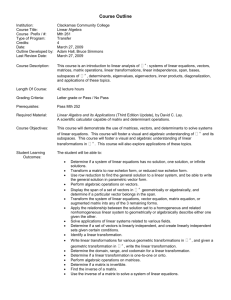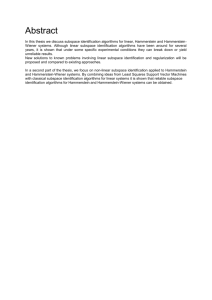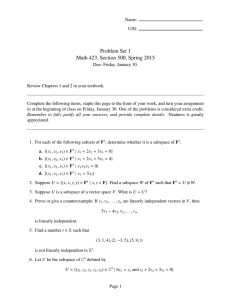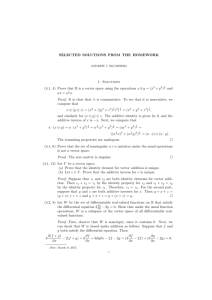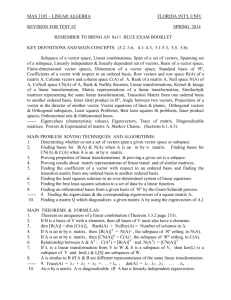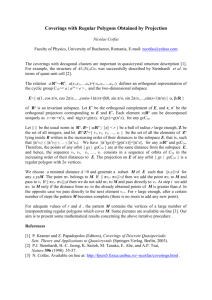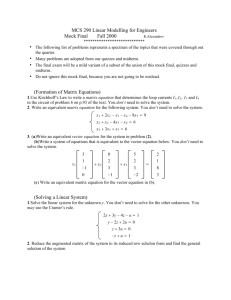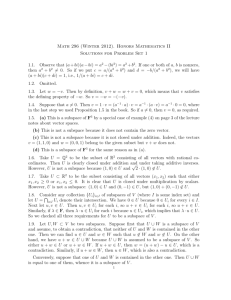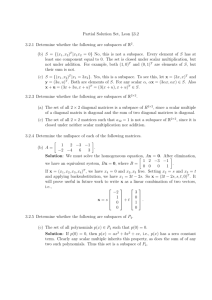mas3105-review2
advertisement
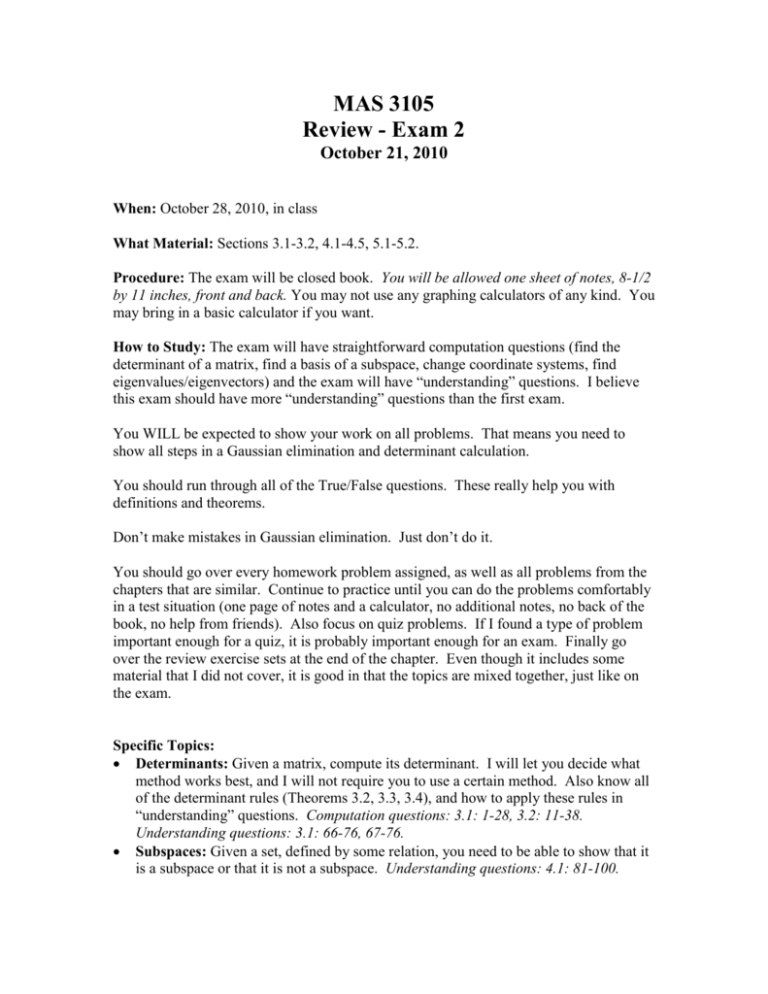
MAS 3105 Review - Exam 2 October 21, 2010 When: October 28, 2010, in class What Material: Sections 3.1-3.2, 4.1-4.5, 5.1-5.2. Procedure: The exam will be closed book. You will be allowed one sheet of notes, 8-1/2 by 11 inches, front and back. You may not use any graphing calculators of any kind. You may bring in a basic calculator if you want. How to Study: The exam will have straightforward computation questions (find the determinant of a matrix, find a basis of a subspace, change coordinate systems, find eigenvalues/eigenvectors) and the exam will have “understanding” questions. I believe this exam should have more “understanding” questions than the first exam. You WILL be expected to show your work on all problems. That means you need to show all steps in a Gaussian elimination and determinant calculation. You should run through all of the True/False questions. These really help you with definitions and theorems. Don’t make mistakes in Gaussian elimination. Just don’t do it. You should go over every homework problem assigned, as well as all problems from the chapters that are similar. Continue to practice until you can do the problems comfortably in a test situation (one page of notes and a calculator, no additional notes, no back of the book, no help from friends). Also focus on quiz problems. If I found a type of problem important enough for a quiz, it is probably important enough for an exam. Finally go over the review exercise sets at the end of the chapter. Even though it includes some material that I did not cover, it is good in that the topics are mixed together, just like on the exam. Specific Topics: Determinants: Given a matrix, compute its determinant. I will let you decide what method works best, and I will not require you to use a certain method. Also know all of the determinant rules (Theorems 3.2, 3.3, 3.4), and how to apply these rules in “understanding” questions. Computation questions: 3.1: 1-28, 3.2: 11-38. Understanding questions: 3.1: 66-76, 67-76. Subspaces: Given a set, defined by some relation, you need to be able to show that it is a subspace or that it is not a subspace. Understanding questions: 4.1: 81-100. Basis and Dimension: Given a subspace, provide a basis for the subspace, and find its dimension. Given a subspace and a finite set, determine if the set is a basis for the subspace. You should know the relation between the subspaces associated with a matrix and the rank of the matrix (4.3, boxed statements, summarized on page 259). Computation questions: 4.2: 1-32, 53-66 (also 4.1 1-42 if you want more practice), 4.3:1-40. Understanding questions: 4.2: 67-70, 4.3: 71-80. Coordinate Systems: Given a vector and a basis, write the coordinate vector of the vector in terms of the basis. Or go the other way: given the coordinate vector and the basis, determine the vector in terms of the standard basis. Computation questions: 4.4: 1-30. Change of Basis for Linear Operators: Given a linear operator and a basis, find the matrix of the operator in terms of the basis. Or, given the matrix in terms of a given basis, find the standard matrix of the operator. Make sure you understand what all of this means. Computation questions: 4.5: 1-18. Understanding questions: 4.5: 39-46. Eigenvalues: Given a matrix, calculate its eigenvalues and corresponding eigenspaces. Understanding questions would involve taking a known matrix and modifying it, then seeing how the eigenvalues/eigenvectors get modified. Computation questions: 5.1: 13-24, 33-40, 5.2:1-40 . Understanding questions: 5.1: 61-75, 5.2: 73-76, 81-85.


